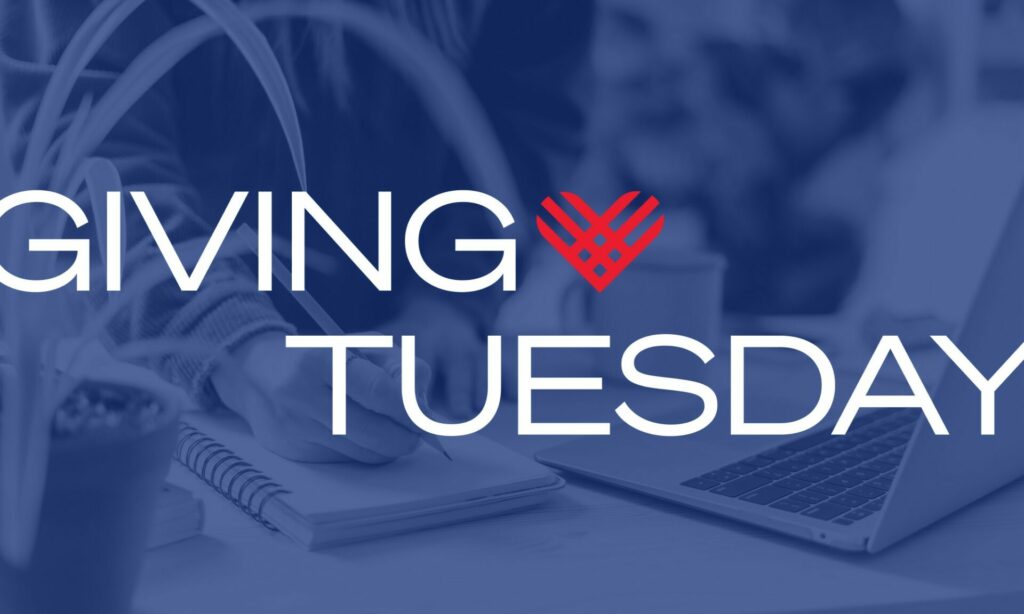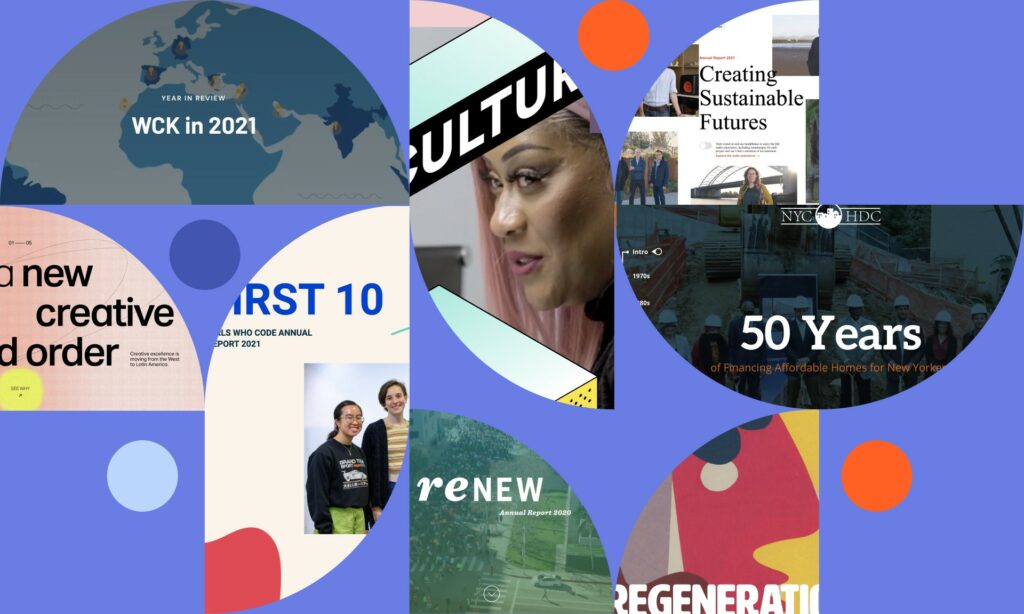
We recently had the chance to lead a workshop at and attend the Classy Collaborative conference in Boston and have some insightful takeaways about the future of social impact organizations and digital best practices and how your organization can get ahead of the trends. Let’s dive right in!
The importance of recurring donors
A recent report by Classy reveals that recurring donors are five times more valuable than one-time donors because, over a lifetime, they offer a higher financial return. While one-time donors are valuable in their own ways, it’s hard to know when and if they will return. Building a solid recurring donor base not only gives your organization a constant source of funding, but also a network of highly engaged supporters that continually return and invest in your mission.
Here are three quick ways you can tap into the psychology of giving to turn one-time donors into recurring supporters:
1. Ask for More, Sooner
There’s so much truth behind the saying, “Ask and you shall receive”, especially when it comes to recurring donations. Many organizations shy away from asking for another donation shortly after a first-time donor engages, but according to Classy’s report, one-time donors are most likely to donate again within 45 days of their first donations than any time thereafter. Why? During that window, the donor is still engaged because your organization’s mission and cause are still fresh on their minds.
An easy way to use this knowledge for your organization’s benefit is by using an email marketing funnel to help you keep track of and follow up with donors. Once they make that first donation, you can set them up to receive updates as donors, and schedule a follow-up email within 45 days of their first donation.
2. Aim to “Complete the Circle”
How satisfying is it to close off the activity rings on your smartwatch? Or how about that urge we have to finish those adult coloring books? You know what we’re talking about—it’s simple human psychology. Research has shown that donors are more motivated when they can see how they are helping reach the “finish line” of a fundraising goal, so you can lean into this psychological need when you’re designing your fundraising campaign in different ways.
Consider adding a visual representation of the donations your organization is received such as a pie chart, a color-by-numbers graphic tied to your mission, or a roadmap to your goal to motivate visitors to donate and fill in the gaps.
3. Break it down
Human memory is a fleeting thing—meaning, once an individual makes a donation, be it $50 or $5,000 – their minds tend to be flooded by other information that easily allows them to forget the valuable impact of their donation. When donors forget about their own value, they don’t donate again. Your job? To remind them.
There’s a variety of ways to do this, but a simple implementation is to break up each donation into smaller levels, such as taking $100 and breaking it down into $25 increments and sending one-time donors a monthly or quarterly reminder of what their money is doing. For example, you can send an email that says something like this, “This month, we’re investing $25 of your donation to buy school materials for one child in our program!” This breakdown of a bigger donation is an easy way to highlight your one-time donors’ impact while also staying on their mind and being transparent as an organization.
The Wave of Mobile Trends
In the website analytics reports we provide for our clients, we have seen a clear trend of growing traffic coming from mobile devices over the last couple of years. It’s not breaking news that more and more people are spending an increasing amount of time on their phones over desktops and tablets. But, what does this mean for your organization’s fundraising efforts?
Whether we like it or not, people are on their phones…a lot. And while there’s something seemingly noble about seeking to pull individuals away from their screens to be present and connected, the reality is that we’re creating a new way to connect, and it’s our responsibility as a sector to find ways to increase social impact by meeting our potential supporters, advocates, and donors where they are: their phones.
The use of social media isn’t an easy feat when it comes to the nonprofit and social impact sector, here are some easy ways to use social media tools to help you unleash your organization’s mission:
1. Optimize your website and donation pages for mobile
Since most people view and share information on their phones now, the first step your organization can take to getting the most out of social media is by optimizing your website and donation platforms for mobile use. There are a lot of ways you can optimize your website for mobile, such as using a responsive WordPress theme (check out other reasons why we love WP here), organizing your content so it’s easy to get to the donate page and using a donation platform, like Classy’s, that is easy to use on a small screen and integrates seamlessly with your site.
2. Take advantage of social media platforms’ fundraising capabilities
Facebook and Instagram now have their own donation and fundraising features that make it easy for users to make donations via donation stickers or fundraising campaigns. This means that you can easily incorporate a call-to-action in an easy and familiar way. The best part? Your staff, friends, family, and supporters can also share a donation sticker or fundraising campaign on your organization’s behalf—talk about using social media for good!
3. Get to know and speak directly to your audience
Generation Z is coming of age, which means they are becoming big influencers of where money, efforts, and advocacy flows. Take this into consideration when creating fundraising campaigns and calls to action: keep your message short and sweet, include catchy hashtags in your messaging, and tell your story in a genuine way.
The Case for Marketing
Causes often have a complicated relationship with the term marketing. Marketing tends to sound sales-y, and it makes us think of advertising and Don Draper. As social impact organizations, we pride ourselves in leading through wholesome values and aiming to make the world a better place. We struggle with the idea of “selling” our mission or “tricking” people into giving us money/support. For those reasons and countless more, we tend to define marketing and communications as ‘overhead’ costs and focus our time and effort elsewhere.
The team at Prosper Strategies, however, is on a mission to change the perspective around marketing in the social sector—and there are three simple ways for you to join in leading the marketing revolution within your organization.
1. Redefine Marketing
First, we have to change how we define marketing in the nonprofit sector. While marketing can be associated with sales, we can shift to defining nonprofit marketing as “the activities, touchpoints, and messages that motivate stakeholders to take actions that advance a nonprofit’s mission and create sustainable social change.”
Marketing has the power to raise awareness, but it can do so much more. Including marketing into every goal in your organization’s strategic plan can help change perspectives and behaviors that move the needle when it comes to your organization’s mission. By integrating your communication and marketing efforts into your larger strategic plan, your organization can take a giant step toward creating measurable change in your sector.
2. Create a Strong Brand Identity
You’ve redefined what marketing means to you, now it’s time to walk the walk. In order for marketing to not sound fake, it has to be just the opposite. Start from within to develop an internal agreement on your organization’s brand that is rooted in your mission and core values.
With a solid brand identity in hand, your external image will be stronger and genuine—motivating stakeholders and supporters to do more for your organization. It will help you to create a recognizable brand that immediately ties you to the most pressing issues in your particular sector, and allows you to be a leader in making change happen.
3. Invest in a Healthy Marketing Budget
Now that you’ve recognized the importance of marketing as a tool to drive change for your organization, invest in it. If you have the ability, get creative and invest in a marketing team and the resources they need to succeed. Invest in agency and consultancy partners that can bring in a deeper knowledge of the communications landscape and design trends. Instead of pooling it in with other overhead costs, prioritize marketing efforts and designate a healthy budget to support the marketing plans that support your overall strategic goals.
Conclusion
During the conference, the feeling of hope, inspiration, and positivity in the nonprofit industry was palpable. We left the conference feeling so inspired about the future of the social impact sector: we learned to engage recurring donors and ambassadors, ways we can leverage social media for good, the true meaning and value of nonprofit marketing.
We hope all these tips make you excited, too, and we’re always here to answer any questions or help you implement any of these steps to make the most out of these growing trends. Thank you Classy for putting on yet another great Collaborative conference, and bringing so many great organizations to come together and teaching us that doing good should feel good!















